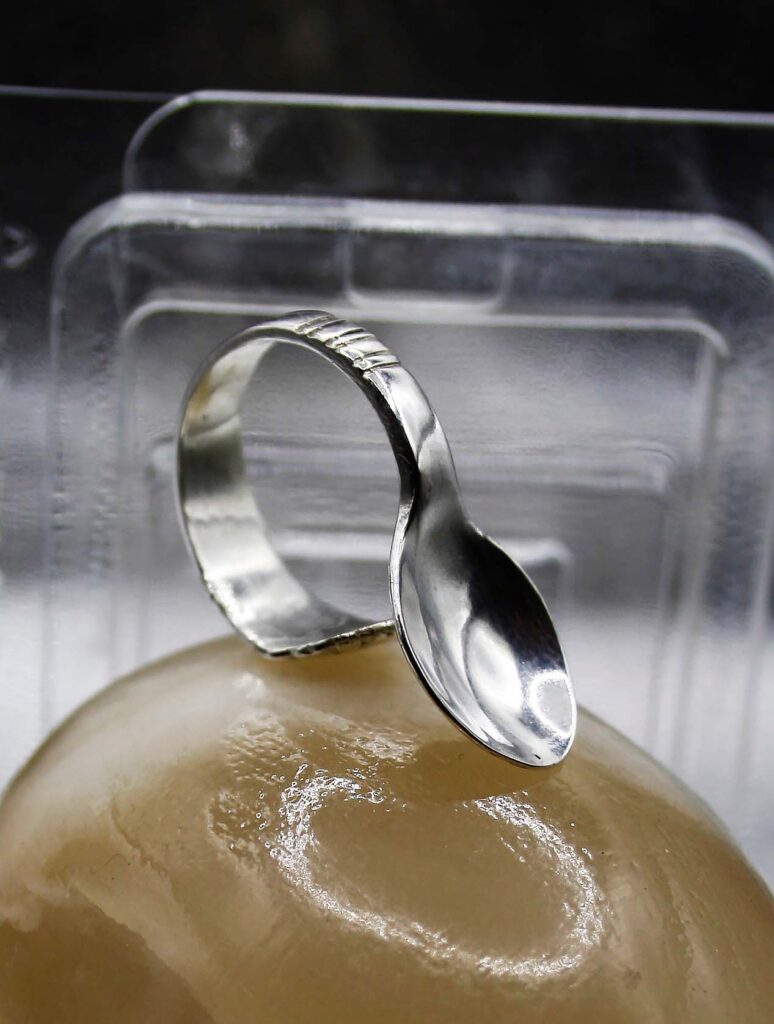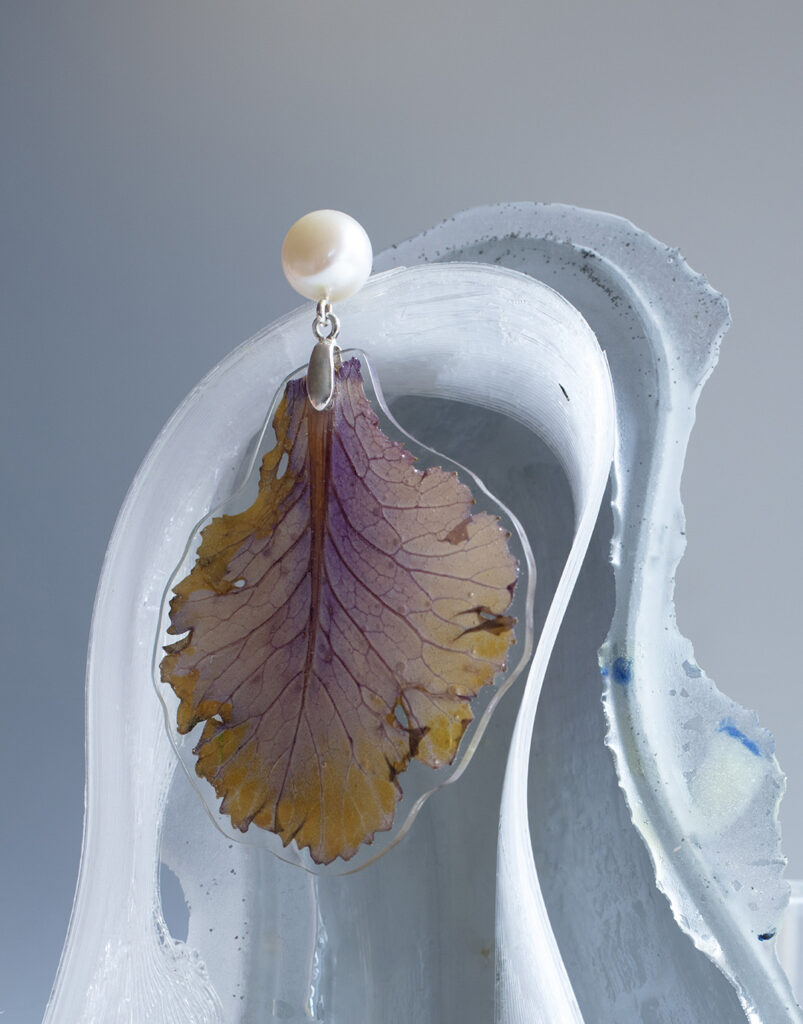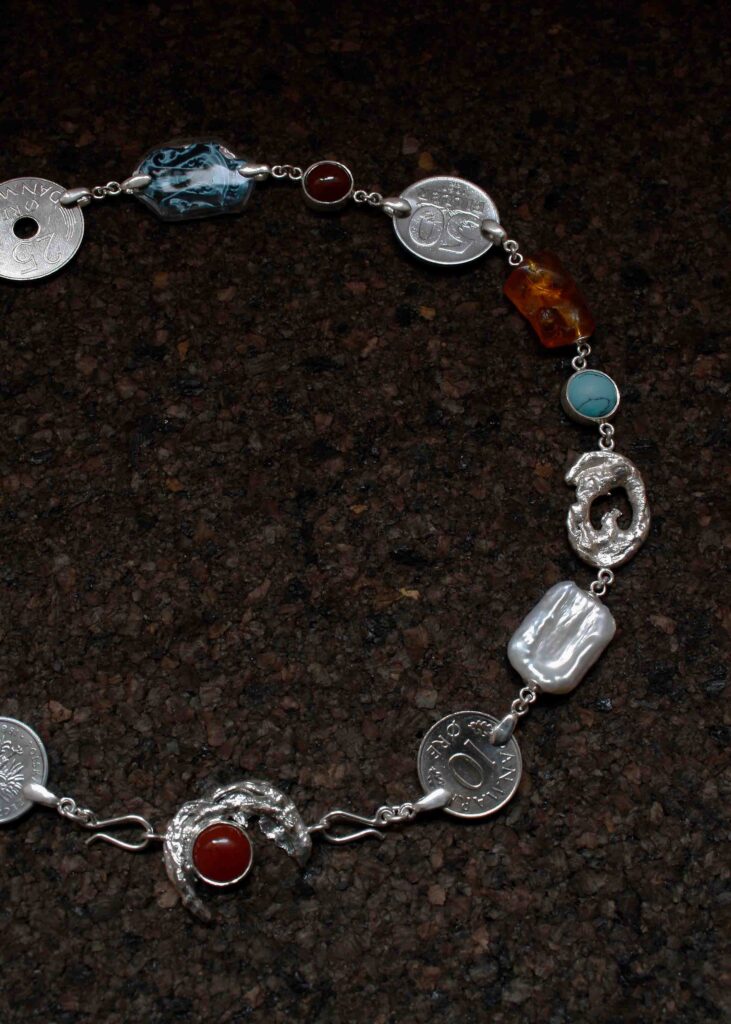
CAROLINE OHRT
How would you describe your brand’s identity in a few words?
Emotional, intimate, conscious design—playful and off-kilter.
What concept or message drives your work?
At the heart of my work is the idea of transforming the unwanted—taking forgotten or discarded objects and giving them new meaning by repurposing them into jewelry. I’m deeply interested in dismantling socially constructed hierarchies around the value of what is considered a “lost object,” and exploring how emotion, memory, and materiality can come together to form a piece that feels deeply personal to the wearer. It’s not about luxury in the traditional sense, but about value through story.
Where do you draw inspiration for your collections?
I draw inspiration from everyday life—objects found on the street, vintage materials, even something as banal as my own leftover chewing gum or expired Visa card. I’m also inspired by the emotional residue that
objects carry: things left behind in a drawer, things we forget we care about until we see them again. That sense of nostalgia and odd beauty really fuels my creative process.

Is there a personal story behind your brand?
Absolutely. My background is in fashion, but I started to feel conflicted about constantly producing things that were more about aesthetics than emotion or function. Jewelry became a way for me to shift toward something more intimate and lasting—a way to tell small personal stories and to have fun with the creative process of making again. It was also a very real response to the guilt I felt about overproduction; now I focus on reusing, not just designing—and it’s a process I have full control over. All pieces are made by me in my
studio in Copenhagen. They are one-of-a-kind or made to order; nothing is produced without purpose.
What’s your approach to design? Do you start from an image, a fabric, a feeling…?
I often begin with a material or a found object. It’s essential for me to work around the material, not through it.
Rather than imposing my will, I ask the object what it wants to become. In that way, the materials guide me—they are my compass, not my canvas. This approach is deeply intuitive and personal. My goal is often to reimagine beauty in a way that honors the object’s past, rather than erasing it.

How do you choose the materials or techniques you work with?
I choose materials based on what I find—literally. I collect things over time: broken jewelry, plastic wrapping, fast food wrappers and foil, pieces of fabric—things with a story. I like materials that feel a bit out of place in traditional jewelry. I often use upcycling and assemblage techniques because I want the process to reflect the idea of giving new life to what’s been overlooked.
Is there a garment or collection you feel especially connected to? Why?
At the moment, it has to be one of my newest pieces: a necklace made from a mixture of very personal objects, created as a small homage to the things I hold dear in life and that bring me joy. To break it down, it’s made with pieces from my grandmother’s old amber necklace, recycled silver from previous projects, a foil cap from a bottle of wine I shared with friends last summer, vintage coins from my and my partner’s home countries, vintage pearls, and finally, turquoise and coral cabochons.
